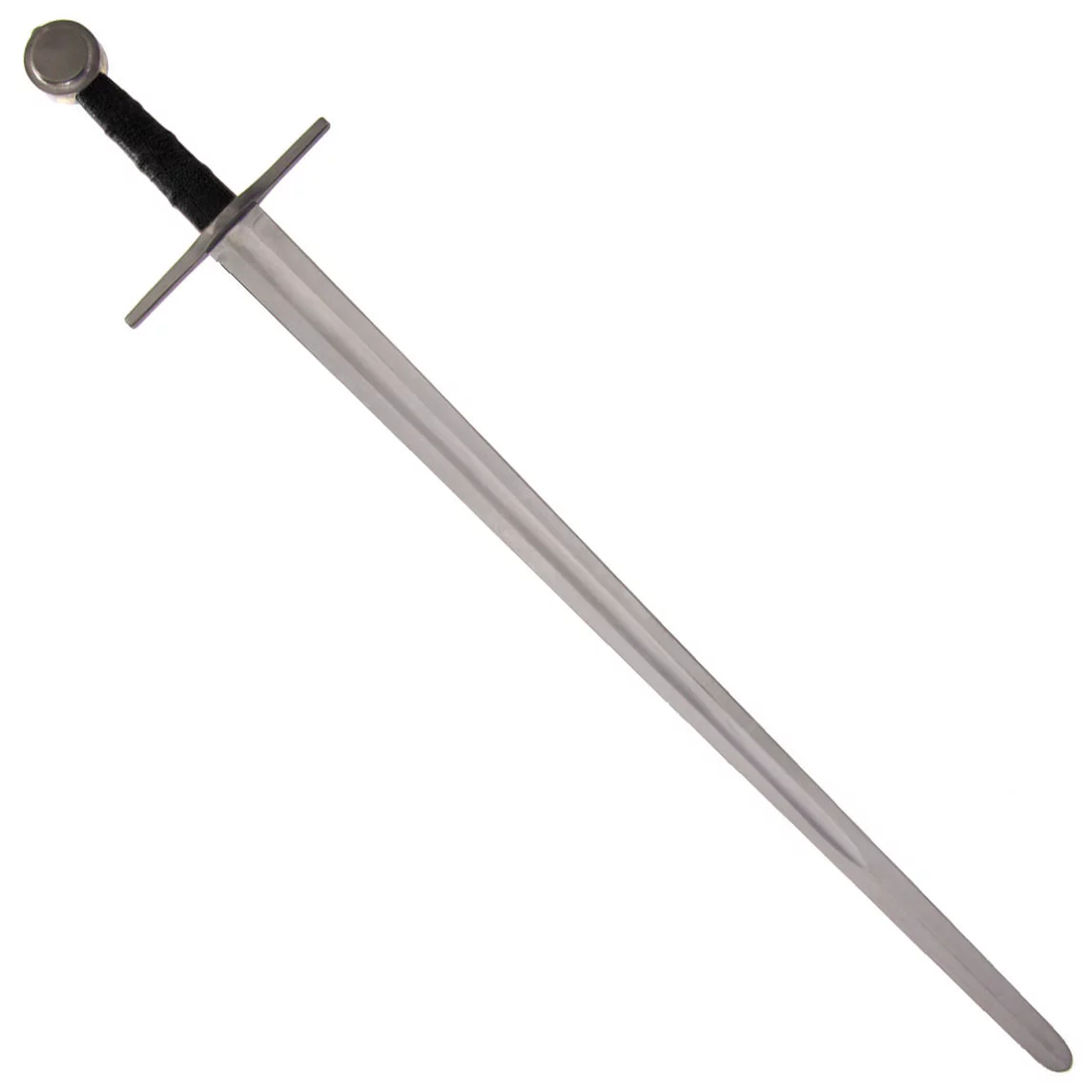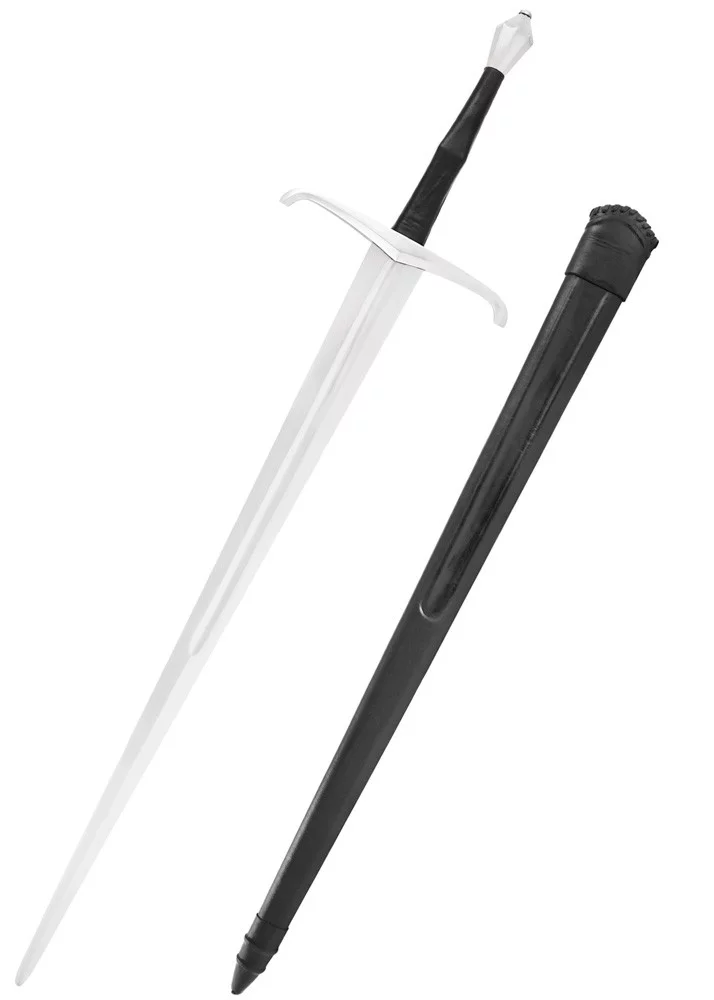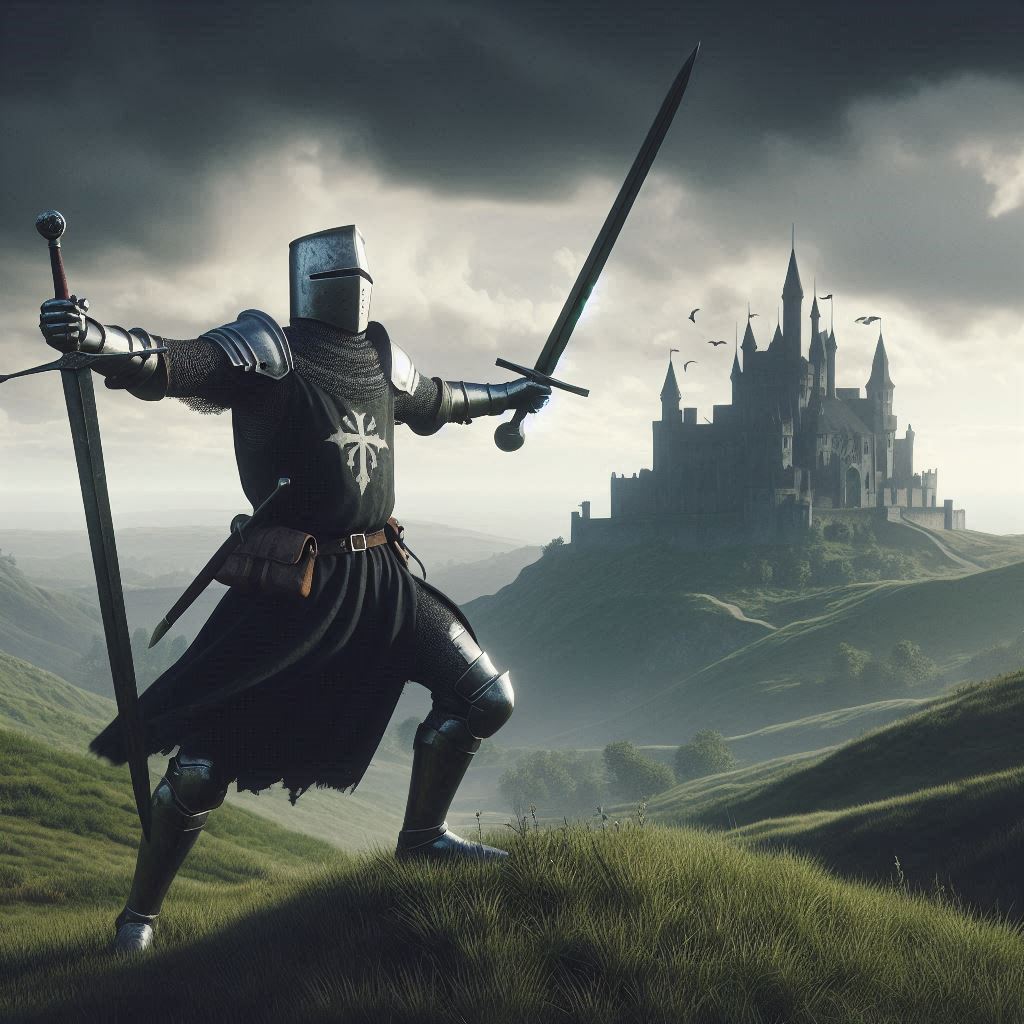One-Handed Sword & Hand-and-a-Half Sword
The medieval era is known for its fascination with weapons and warfare. Among the many weapons of the time, one-handed swords and hand-and-a-half swords have captured the attention of historians and enthusiasts alike. Below, the distinctive features and uses of these two icons of medieval warfare are examined in detail.
One-Handed Sword
The one-handed sword is one of the most iconic weapons of the Middle Ages, designed to be used with one hand. Its compact and versatile design makes it an effective tool for close combat.
- Short Blade: Generally, its blade is shorter, making it easier to use in confined spaces.
- Wide Grip: This design allows for better grip and handling.
- Usage: Perfect for close-quarters combat, its speed and lightness are crucial advantages on the battlefield.

Hand-and-a-Half Sword
In contrast, the hand-and-a-half sword, often called a bastard sword, features a design that allows it to be used with either one or two hands. This feature makes it a versatile option for different combat styles.
- Long Blade: Its length provides greater reach and force in attacks.
- Narrow Grip: Allows a good grip with both hands, increasing stability during combat.
- Usage: Ideal for two-handed combat, it is especially valued by warriors seeking power and versatility.

General Comparison
| Feature | One-Handed Sword | Hand-and-a-Half Sword |
|---|---|---|
| Blade | Short | Long |
| Grip | Wide | Narrow |
| Usage | Close-quarters combat | Two-handed combat |

It is essential to remember that both one-handed and hand-and-a-half swords have an important place in military history and popular culture. Both weapons have left an indelible mark on the tradition of swords, becoming symbols of honor and skill in the art of fencing and combat.
















